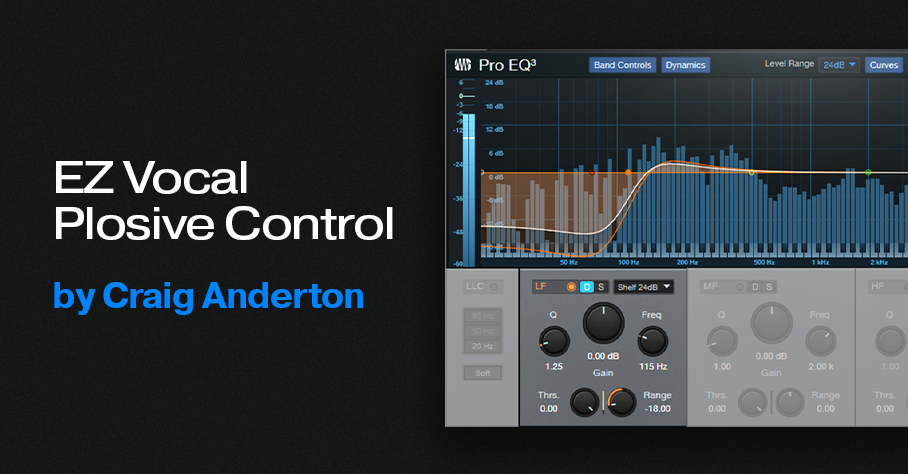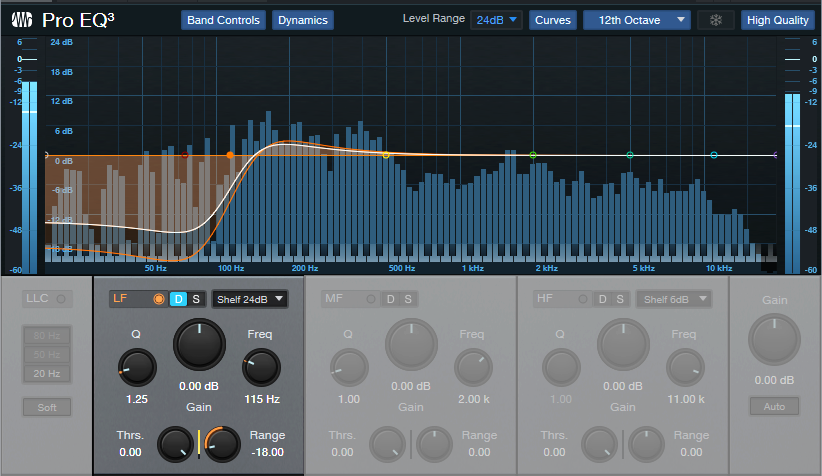EZ Vocal Plosive Control

No matter how carefully you set up a mic’s pop filter, some pops are bound to get through the filter with vocalists who sing close to the mic. But you don’t need to redo or punch the vocal—let’s explore several ways to fix these problems in the mix.
Pro EQ3 dynamic EQ. Dynamic EQ is a fast, simple way to reduce pops (fig. 1):
1. Enable the low-frequency (LF) stage. Click the D button to reveal the dynamic EQ parameters.
2. Choose a 12 or 24 dB/octave low-frequency shelf.
3. Start with a substantial negative Range (e.g., ‑12 to ‑20).
4. Set Thrs. (threshold) to 0.00.
5. Loop the vocal section with the plosives. Adjust the low-shelf frequency so that the low-frequency attenuation affects only the plosives, not the voice’s usual warmth.
This technique also allows for a cool trick. Increase the Q slightly. When the plosives are being reduced, the increased Q adds a slight boost just above the shelf’s corner frequency. This gives some extra warmth to compensate for the lows being reduced.
Although this technique is simple to set up and works on an entire track, it may not be effective enough with super-nasty pops. The following methods are labor-intensive but can annihilate pretty much any plosive.
Split the Event before and after the pop, then insert Low Cut EQ as an Event FX. Roll off the low frequencies with the Event FX EQ (fig. 2). The only drawback is that if there are clicks when transitioning in or out of the isolated event, you’ll need to add crossfades or fades.

Split just before the pop, then fade in over the beginning (fig. 3). This reduces the level of the pop’s most prominent part—the beginning. For the best results, you need to find just the right split point prior to the pop, and carefully edit the fade shape.
For a solution that fixes plosives and sibilant (“ess”) sounds, check out The Vocal Repair Kit blog post. It’s also a tip in The Huge Book of Studio One Tips & Tricks v1.4 (see page 174).

